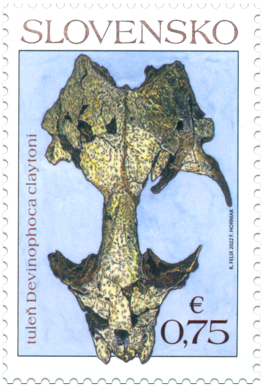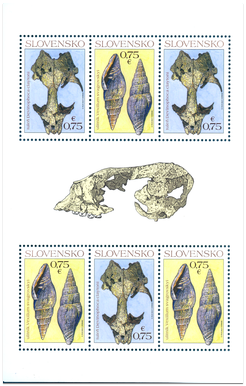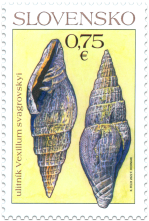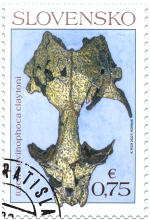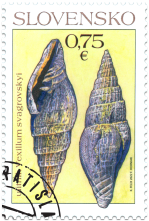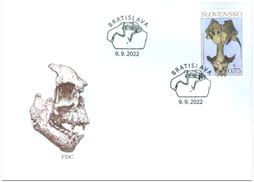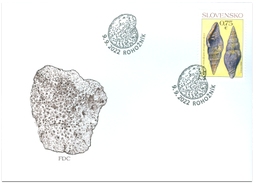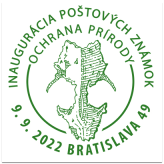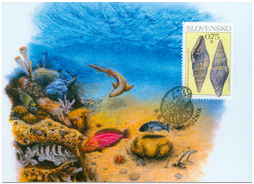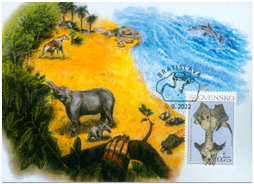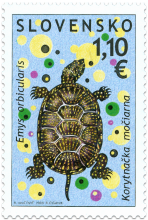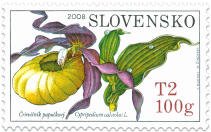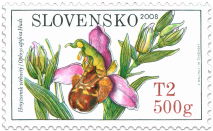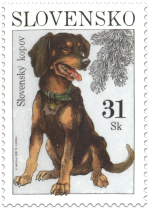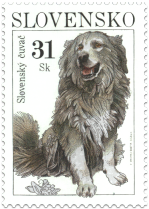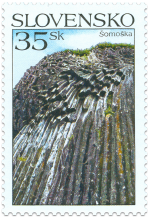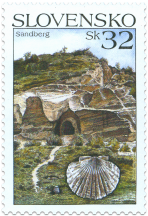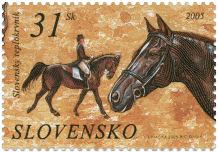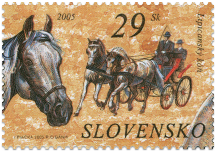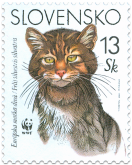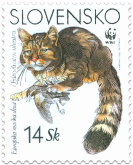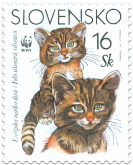772 Date of issue
09.09.2022 Face value
0.75 € Sell price
0.75 €
Devínska Kobyla hill (514 m) forms the south-eastern ridge of the Little Carpathians. A large number of paleontological sites makes this place unique. These include Bonanza, a significant paleontological site, that is located on the northern edge of Devínska Kobyla, between the boroughs of Dúbravka and Devínska Nová Ves. The site is a rift in the Mesozoic limestone that is filled with marine sediments from the Early Tertiary – Miocene periods. Excavations have revealed rare fossils of marine and terrestrial vertebrates.
During the Early Tertiary period (Miocene) Devínska Kobyla was an area of dry land with an ecosystem that ranged between that of a peninsular and an island. Based on the fossils discovered, it can be assumed that 13 million years ago the dominant ecosystem was a subtropical moist forest habitat with sources of fresh water and rare clearings. The coast included rocky cliffs and sandy beaches washed by a warm shallow sea that was inhabited by a wide range of marine fauna.
One such animal was a seal: Devinophoca claytoni, whose unique fossilised remnants were discovered at Bonanza. The fossils of this newly described genus and species of seal shows that it had specific morphological features which makes it stand-out from other groups of seals. Thus, Devinophoca claytoni was included into the newly described subfamily Devinophocinae. The genus and family names were coined from the name of the nearby borough of Devínska Nová Ves and the Latin name for the seal (phoca). It is very important from an evolutionary point of view as it represents a primitive group of seals, found at Devínska Kobyla, that is considered to be the predecessors of all the seals that live today. This precious species was only endemic to Bonanza, where it lived in the shallow marine paleo-environment with the zones of coral reefs near the former coast of Devínska Kobyla, on the eastern edge of this Tertiary sea, the Central Paratethys. The morphology of the skull revealed that the species Devinophoca claytoni lived on molluscs and crustaceans. The postage stamp depicts the fossil of the holotype of the skull of Devinophoca claytoni which may be found in the collection of the Museum of Natural History of the Slovak National Museum in Bratislava.
Radoslav Biskupič
Show lessSimilar products
461 Date of issue
23.10.2009
431 Date of issue
23.10.2008
432 Date of issue
23.10.2008
395 Date of issue
18.04.2007
394 Date of issue
18.04.2007
374 Date of issue
21.04.2006
373 Date of issue
21.04.2006
361 Date of issue
30.06.2005
360 Date of issue
30.06.2005
299 Date of issue
25.06.2003
300 Date of issue
25.06.2003
301 Date of issue
25.06.2003
© 2024 POFIS - Postal philatelic service. All rights reserved

